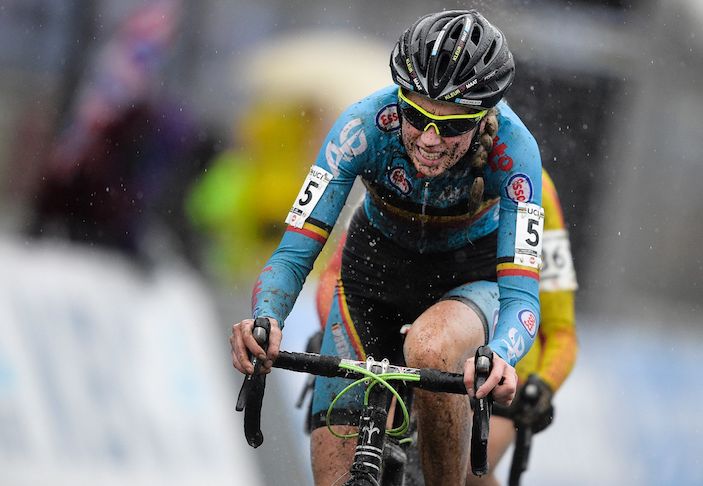Could there be a better metaphor for the corruption that now pervades all top-level sport than the use of motors in professional cycling? It’s so perfectly shameless. If you’re going to cheat by finding illicit ways in which to enhance your performance, as virtually all sportspeople today are forced to do (we’ll come back to that), why mess about with half-measures? Find a motor and strap it on. Undying glory and unimaginable wealth are just the other side of that mountain. Open that throttle, baby!
In December last year, Istvan ‘Stefano’ Varjas, a Hungarian engineer who claims to have invented the technology necessary to conceal a near-silent engine in a racing bicycle, gave an interview to CBS’s 60 Minutes, in which he said he first sold his engines to an unnamed individual in 1998 for $2 million, agreeing to ten-year exclusivity and silence as part of the deal. He even gave a demonstration for the cameras of how the technology worked.
In January last year, a motor was found in the bike of the European cyclo-cross champion Femke Van den Driessche. Two months later, footage was captured using thermal cameras at two races in Italy that appeared, very convincingly it must be said, to show heat patterns within frames and wheels consistent with the use of motors in the bikes of at least seven professional riders.
But if some professional riders are using motors, how are the authorities not preventing it? Surely it cannot be hard to detect a motor in a bicycle. Sadly, as is the case with anything involving cheating in top-level cycling, the answer is far from straightforward. Many insiders believe that the Union Cycliste Internationale, cycling’s governing body, lacks the appetite to uncover yet another damaging scandal in its sport.
The three-time former Tour de France winner Greg LeMond seems to think so. ‘All people have to do is open their eyes and ears and take this seriously,’ he says. ‘Nobody wants to believe in this stuff. The worst part is that people who are in the know do know about it, but don’t do anything. The UCI has known about it [motors] for many years.’
Motodoping, as it has come to be known, takes cycling further into Dick Dastardly territory than it has ever been before, which is saying something for a sport in which doping of one type or another has been rife since at least the 1950s. But cyclists are far from the only miscreants in professional sport. Today, I suspect, the vast majority of professional sportsmen and women cheat. They’d be mad not to. How else can they compete?
Sport is nothing if not a zero-sum game — your victory is my defeat. But if you’re cheating to beat me and not being caught, then what choice do I have but to cheat too? It’s that or pass up the opportunity to fulfil the rarest of talents and instead to find another, rather duller, rather less lucrative career.
Does that sound far-fetched? It’s not. In 2015, Panorama’s Mark Daly demonstrated how easy it is to get around the drug checks to which athletes are subjected. He took EPO — the blood-boosting wonder drug that can enhance athletic performance by more than 15 per cent — for seven weeks. At the end he took a drugs test and passed.
Nine years ago, the disgraced American athlete Marion Jones’s go-to chemist, Angel Heredia, gave an amazingly frank interview to Der Spiegel in which he said: ‘If you finish in eighth place in a big event, you get $5,000. If you finish first, you get $100,000. Athletes think about this. Then they think everyone else dopes anyway, and they are right.’
He added that money was the only difference between being caught and becoming a multimillionaire: ‘Athletes with little money use simple steroids and hope they don’t get tested. The stars earn $50,000 a month, not including starting bonuses and shoe sponsorships. The very best invest $100,000 [in doping]. I’ll then build you a designer drug that can’t be detected.’
As spectators and fans, we don’t want to believe that sportspeople are cheating. I’d venture that’s because we want to experience again the purity of the elation we once felt playing the sport we now watch, and because we are naturally optimistic about the feats of which our species is capable.
But the evidence is in front of our eyes. Whenever an elite sports star from any discipline — football, rugby, tennis, boxing, athletics, even cricket — is caught doping, we never seem to consider how it is that other, supposedly clean, athletes had been able to compete with them, or even to beat them. Ben Johnson’s 9.79 seconds for the 100m — achieved after training relentlessly and taking every performance-enhancing drug he could get his hands on — would now not even be in the top 30 quickest legal times.
Athletes are no more dishonest than anyone else. They do not want to cheat. But the rewards for winning are too great, the penalties for cheating too light, and the chances of being caught too vanishingly small. Put in their position, most sane people would do the same, for the simple reason that doping pays the bills and feeds the family. Until anti-doping authorities are able to detect performance-enhancing drugs with 100 per cent accuracy, it is unreasonable for us to expect athletes competing for money in any sport not to use them. That does not mean we should condone cheating, but instead that we should understand the invidious position which people who play sport for a living find themselves in, and empathise.
Cheating is cheating and there is no glory in it. But the time has come to accept that to compete at sport’s highest levels, there is no option but to cheat.







Comments